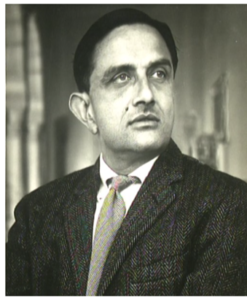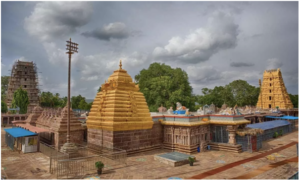IASbaba's Daily Current Affairs Analysis
Archives
(PRELIMS & MAINS Focus)
Syllabus:
- Prelims & Mains – HISTORY
Context: On December 30 in 1906, the All India Muslim League, best known for securing India’s partition into two nations, was founded.
Background: –
- After Partition, the Muslim League was disbanded in India. In Pakistan and later in Bangladesh too, the League broke into factions and did not survive long.
Key takeaways
- The AIML was founded on December 30, 1906, at the All-India Muhammadan Educational Conference in Dhaka, under the leadership of Nawab Salimullah Khan, Sir Aga Khan, and others.
- Headquarters: Initially in Dhaka, later shifted to Lucknow.
- At the time of its founding, the League was a collective of elite Muslim men, and remained so for almost three decades. Muhammad Ali Jinnah, eventually its tallest leader, was then in the Congress.
Key moments
- Separate Electorates (1909): The league successfully lobbied for separate electorates for Muslims, introduced in the Indian Councils Act of 1909 (Morley-Minto Reforms).
- The Lucknow Pact, 1916: In December 1916, the Congress under Bal Gangadhar Tilak and the Muslim League under Muhammad Ali Jinnah signed the Lucknow Pact. Put briefly, the pact called for more Indian, elected representation in bodies like the provincial and central legislatures and the central executive council, and the Congress agreeing to separate electorates.
- Shift Towards Separatism (1930s): The league gradually moved toward the idea of a separate nation for Muslims under the leadership of Muhammad Ali Jinnah.
- The Lahore Resolution, 1940: From the Lucknow pact to the Lahore Resolution, both the League and Jinnah had transformed entirely, insisting on nothing but Partition. Thus, the Lahore Resolution, adopted by the All-India Muslim League during its general session in Lahore from March 22 to March 24, 1940, formally called for an independent state for Muslims. March 23 is observed as Pakistan National Day to commemorate this resolution.
Source: Indian Express
Syllabus:
- Prelims & Mains – SCIENCE & TECHNOLOGY
Context: Vikram Ambalal Sarabhai, the father of India’s space programme, died on December 30, 1971, in Kovalam, Kerala, at the age of 52.
Background: –
- Late President APJ Abdul Kalam once had called the “Mahatma Gandhi of Indian Science”.
Key takeaways
- Born to Ambalal and Sarla Devi, Ahmedabad’s leading textile-mill owners on August 12, 1919.
- After studying from Gujarat University in Ahmedabad, Sarabhai went to study physics and mathematics at Cambridge University, but was forced to return when World War II broke out.
- He completed his post-graduation at the Indian Institute of Science in Bengaluru under Dr CV Raman, where he also met Dr Homi Bhabha, and returned later to Cambridge for a PhD in cosmic rays.

Key Contributions to Indian Science and Technology:
- Space Research and ISRO Formation:
- Visionary Leader: Recognized the importance of space technology for India’s development.
- Played a significant role in establishing the Physical Research Laboratory (PRL) in Ahmedabad in 1947, focusing on fundamental physics and space sciences.
- Establishment of ISRO (1969): Played a pivotal role in setting up the Indian Space Research Organisation (ISRO) to promote space exploration and satellite-based communication.
- Instrumental in India’s first satellite, Aryabhata (1975), launched posthumously.
- Atomic Energy and Research Institutes:
- Worked with Homi Bhabha to strengthen India’s atomic energy program.
- Sarabhai succeeded Homi Bhabha as the chairman of the Atomic Energy Commission of India.
- Indian Institute of Management (IIM), Ahmedabad: Co-founded IIM Ahmedabad in 1961, establishing it as a premier management institute globally.
- Satellite Technology and Applications:
- Conceptualized the Indian National Satellite System (INSAT) to advance communication, education, and meteorology.
- Satellite Instructional Television Experiment (SITE) : Sarabhai started a dialogue with NASA that formed the base for Satellite Instructional Television Experiment. Launched in 1975 from village Pij in Gujarat’s Kheda district, it would beam TV programmes to villages and was the first Indo-US space venture using technology for education.
Source: Indian Express
Syllabus:
- Prelims – GEOGRAPHY
Context: The cargo-handling capacity at Indian ports has risen from 871.52 million tonnes per annum (MTPA) in 2014-15 to 1629.86 MTPA in 2023-24. Minister for Ports, Shipping and Waterways Sarbananda Sonowal said the capacity increased by 87 per cent in the last nine years, with Tamil Nadu’s Kamarajar Port registering a whopping swell of 154 per cent.
Background:
- India is a maritime nation with a 7,517-km coastline Ninety-five per cent of trade by volume and 70 per cent by value is done through maritime transport.
Key takeaways
- Kamarajar Port Limited (KPL), formerly known as Ennore Port, is located on the Coromandel Coast about 24 km north of Chennai Port in Tamil Nadu, India.
- History and Establishment
- Foundation: Kamarajar Port was declared a major port under the Indian Ports Act, 1908, in March 1999 and incorporated as Ennore Port Limited under the Companies Act, 1956, in October 1999.
- Name Change: It was renamed Kamarajar Port Limited in 2014 to honor the former Chief Minister of Tamil Nadu, K. Kamarajar.
Key Features
- First Corporatized Port: Kamarajar Port is the first corporatized major port in India.
- Strategic Location: The port is designed to decongest Chennai Port and improve environmental quality.
- Capacity: The port has a permissible draught of 13.5 meters and handled a total volume of 11.01 million tonnes in 2010-2011.
- Cargo Handling: The port handles a variety of cargo, including thermal coal, automobiles, project cargo, LPG, chemicals, and other bulk and liquid products.
Source: New Indian Express
Syllabus:
- Prelims & Mains – SCIENCE & TECHNOLOGY
Context: India’s largest power generator NTPC Limited has signed a strategic pact with US-based Clean Core Thorium Energy (CCTE) to explore development and deployment of advanced nuclear energy for enriched life (Aneel). Aneel is a thorium-based fuel for pressurised heavy water reactors (PHWRs), and the deal is subject to approval from both the governments.
Background: –
- The move is aimed at NTPC’s efforts to venture into nuclear energy and use it as a clean, dispatchable, and baseload source of energy.
Key takeaways
- Thorium is a weakly radioactive, silvery metal found naturally in the Earth’s crust.
- Thorium (chemical symbol Th) is found at trace levels in soil, rocks, water, plants and animals.
- All known thorium isotopes are unstable. The most stable isotope, 232Th, has a half-life of 14.05 billion years, or about the age of the universe.
- It is fertile, meaning it can be converted into fissile material (Uranium-233) when bombarded with neutrons.
Thorium in Nuclear Energy
- Role in Nuclear Reactors:
- Unlike uranium, thorium is not fissile but is fertile.
- When irradiated in a nuclear reactor, thorium-232 absorbs a neutron and converts into uranium-233, a fissile isotope that can sustain a nuclear chain reaction.
- Advantages of Thorium-Based Reactors:
- Abundance: Thorium is three to four times more abundant in the Earth’s crust than uranium.
- Low Nuclear Waste: Thorium reactors produce less long-lived radioactive waste compared to uranium reactors.
- Safety: Reactors using thorium have inherent safety features due to their operation at lower pressures and temperatures.
- Resistance to Proliferation: Thorium fuel cycles are less susceptible to misuse for weapons-grade material.
- Challenges in Using Thorium:
- Technology Readiness: The thorium fuel cycle is not as commercially established as uranium-based cycles.
- Initial Infrastructure: Requires uranium or plutonium to kickstart the reaction.
- Separation Complexity: Extraction of uranium-233 from thorium is a challenging and costly process.
Thorium Availability in India
- India has one of the largest reserves of thorium in the world, with about 25% of the global reserves.
- Indian Reserves: Found in monazite sands, primarily in the coastal regions.
- Key Locations:
- Kerala: Chavara and Alappuzha
- Tamil Nadu: Kanyakumari
- Odisha: Ganjam
- Andhra Pradesh
Source: Business Standard
Syllabus:
- Prelims – ART & CULTURE
Context: The Archaeological Survey of India (ASI) has made a significant discovery at the Srisailam Temple in Andhra Pradesh, uncovering several copper plates and other ancient inscriptions in the temple’s Ghantamandapam.
Background: –
- The Srisailam temple, also known as the Mallikarjuna Swamy Temple, is one of the most revered and ancient pilgrimage sites in India.

Key takeaways
- Location: Situated in the Nallamala Hills, on the banks of the Krishna River, in Kurnool district, Andhra Pradesh.
- Deity: Dedicated to Lord Mallikarjuna (Shiva) and Goddess Bhramaramba (Parvati).
- Significance:
- It is one of the 12 Jyotirlingas of Lord Shiva and one of the 18 Shakti Peethas of Goddess Parvati, making it unique for housing both.
- The temple is a prominent center for Shaivism and Shaktism.
- There are inscriptional evidence from the Satavahana dynasty which place the temple to be existent from the 2nd century.
- Most modern additions were done during the time of king Harihara I of Vijayanagara Empire (14th and 15th centuries).The veerasheromandapam and paathalaganga steps was constructed during the time of Reddi Kingdom (12th and 13th centuries).
- Style: Dravidian style of architecture with intricately carved gopurams and mandapas.
Source: Times of India
Practice MCQs
Q1.) Consider the following statements regarding Kamarajar Port:
- It is the first corporatized major port in India.
- The port is located in Andhra Pradesh, near Visakhapatnam.
- Kamarajar Port was formerly known as Ennore Port.
Which of the statements given above is/are correct?
(a) 1 and 3 only
(b) 1 and 2 only
(c) 2 and 3 only
(d) 1, 2, and 3
Q2.) With reference to Thorium as a resource, consider the following statements:
- Thorium is fissile and can directly sustain a nuclear chain reaction.
- India has the world’s largest reserves of thorium, mainly found in monazite sands.
- Thorium-based reactors produce less long-lived nuclear waste compared to uranium-based reactors.
Which of the statements given above is/are correct?
(a) 1 and 2 only
(b) 2 and 3 only
(c) 1 and 3 only
(d) 1, 2, and 3
Q3.) Consider the following statements about Srisailam Temple:
- It is one of the 12 Jyotirlingas and 18 Shakti Peethas in India.
- The temple is located on the banks of the Godavari River in Andhra Pradesh.
- Most modern additions to the temple were made during the Vijayanagara Empire.
Which of the statements given above is/are correct?
(a) 1 and 2 only
(b) 1 and 3 only
(c) 2 and 3 only
(d) 1, 2, and 3
Comment the answers to the above questions in the comment section below!!
ANSWERS FOR ’ Today’s – Daily Practice MCQs’ will be updated along with tomorrow’s Daily Current Affairs
ANSWERS FOR 30th December – Daily Practice MCQs
Q.1) – d
Q.2) – d
Q.3) – b














